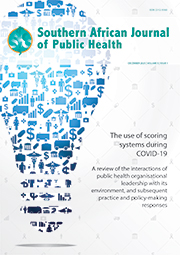Biostatistics notebook

Systematic demographic analysis of the prevalence of diabetes mellitus in Africa
Abstract
Background. The prevalence and incidence of diabetes mellitus is increasing at an alarming rate worldwide, especially in Africa. It was long thought that Africans suffer mainly from communicable diseases, but data from sources such as the International Diabetes Federation show an increasing prevalence of non-communicable diseases in Africa.
Objectives. To review startling data from the International Diabetes Federation about the population of diabetics in Africa.
Methods. The data are presented as percentages of each variable, specifically the residential setting, gender and age group of populations in countries of the north, southern, west, east and central Africa sub-regions. This was done for easier comprehension and comparison than if presented as raw values. The patterns and trends in the countries of each sub-region are thereafter discussed. Variation in the prevalence of diabetes between individual countries was observed.
Results. Diabetes prevalence is significantly higher in urban than in rural areas: of the diabetic population, 55.90% are urban dwellers v. 44.10% rural. An exception is the east Africa sub-region, with 38.16% urban dwellers, as against 61. 84% rural, but the overall pattern shows urbanisation as a major factor for the increasing prevalence of diabetes in Africa. The most productive demographic of society (20 - 59 years old) were the most affected by diabetes in all African countries and sub-regions: north, 72.87%; southern, 75.57%; west, 82.49%; east, 84.06%; and central, 83.74%. These are citizens in their prime and the most useful segment of the workforce. Diabetes is not sex-sensitive in Africa, with 48.89% of diabetics male v. 51.11% female, apart from in the north and southern Africa regions (44.16% male and 55.84% female, and 43.52% male and 56.48% female, respectively). The rate of death due to diabetes is very high in Africa. The number of undiagnosed cases is huge. The economic impacts of diabetes, which include increased use of health services and loss of productivity, and consequent financial burden, are severe.
Conclusion. Given the rising global prevalence of diabetes, and projections that this will continue to increase substantially over the coming decades, we suggest measures to be taken to stem the tide of the disease, in Africa in particular and the world at large. The prevalence of diabetes can be reduced drastically with timely action on these recommendations. Intervention strategies to control diabetes need to be intensified.
Authors' affiliations
V O Akinsola, Department of Mathematics, Faculty of Science, Adeleke University, Ede, Nigeria
T O Oluyo, Department of Pure and Applied Mathematics, Faculty of Pure and Applied Sciences, Ladoke Akintola University of Technology, Ogbomoso, Nigeria
E A Morakinyo, Department of Biochemistry, Faculty of Science, Adeleke University, Ede, Nigeria
Full Text
Cite this article
Article History
Date published: 2019-10-31
Article Views
Full text views: 1519

.jpg)


Comments on this article
*Read our policy for posting comments here